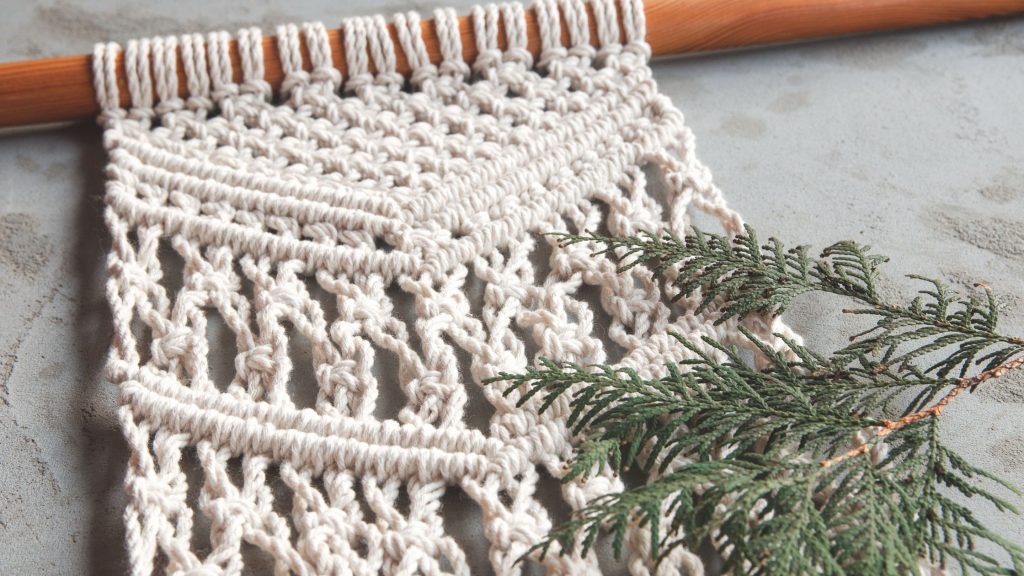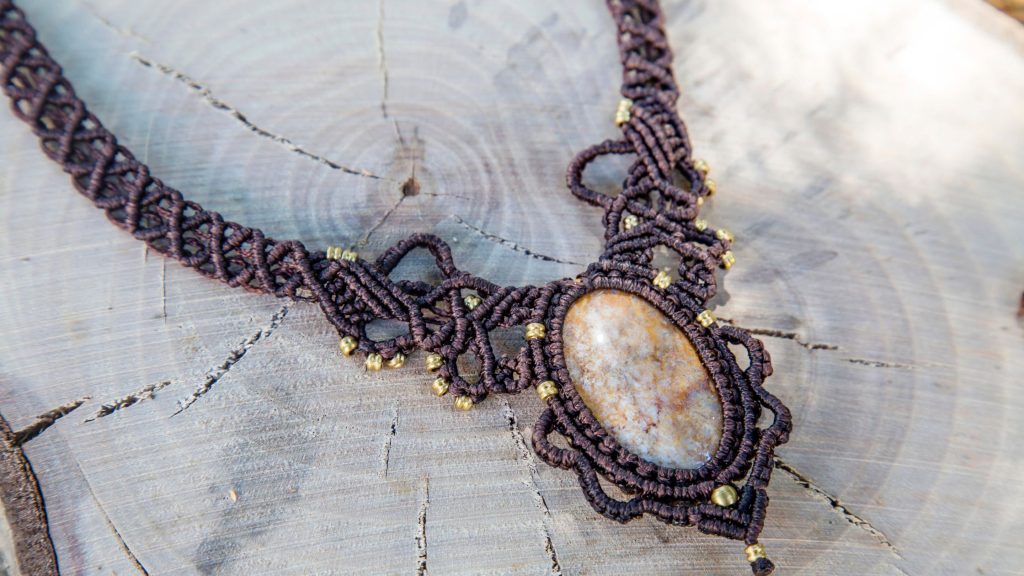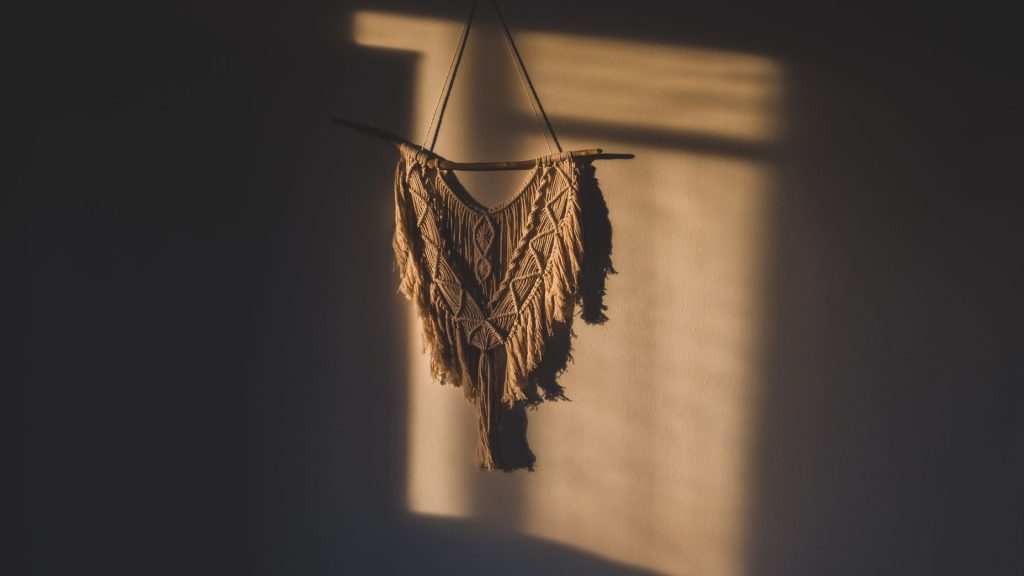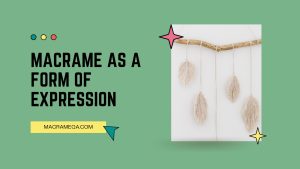Discover the fascinating connection between the rich history of macrame and its impact on modern macrame design. From its ancient origins to its resurgence in popularity today, the intricate knots and patterns of macrame have evolved over the centuries, creating a unique tapestry of inspiration for contemporary artists and artisans. By examining the influences of traditional macrame techniques on modern design, you will gain a deeper appreciation for this timeless art form and the ways in which it continues to shape the world of interior decor and fashion. Step into the entwined world of macrame history and embark on a journey that unveils the remarkable thread of influence that has shaped modern macrame design.
Evolution of Macrame
Traditional Origins of Macrame
Macrame is an ancient art form that dates back centuries. It originated in the Arabian Peninsula and was brought to Europe by Arab traders in the 13th century. The word “macrame” itself has Arabic roots, with “miqramah” translating to “fringe” or “ornamental fringe” in Arabic.
Macrame was primarily used in the Middle East to create functional items such as camel reins and horse harnesses. It was also utilized in the construction of tents and as decorative elements in hammocks, pillows, and mats. Macrame techniques were passed down through generations, becoming an integral part of various cultures, including Turkish, Persian, and Moorish.
Spread of Macrame to Different Cultures
As trade routes expanded, so did the popularity of macrame. It spread across North Africa, the Mediterranean, and eventually reached Europe. In Europe, macrame gained prominence during the Renaissance period, particularly in Italy and France. It became a favored craft among royalty and the affluent, who used macrame to adorn their clothing, furnishings, and interior spaces.
During the Age of Exploration, sailors learned macrame knotting techniques from Middle Eastern artisans and incorporated them into their own maritime culture. Macrame was used to create intricate and durable shipboard items such as hammocks, belts, and bags. This led to the introduction of macrame to the Americas, where it became intertwined with Native American craftsmanship and culture.
Revival of Macrame in the 1960s
Macrame experienced a resurgence of popularity in the 1960s, fueled by the counterculture movement and the desire for handmade, bohemian-inspired creations. The art form became synonymous with the hippie culture and the peace and love movement of the era. Macrame plant hangers, wall hangings, and clothing were all the rage, showcasing the creativity and individuality of the time.
Influence of Traditional Techniques
Knotting Techniques from Different Cultures
The rich history of macrame encompasses a wide range of knotting techniques borrowed from diverse cultures. Each technique adds its own unique flair and complexity to macrame designs.
Turkish knotting, also known as the square knot, is one of the most fundamental and widely used macrame knots. It involves overlapping two cords and then passing the ends through the loop created, resulting in a symmetrical knot.
Celtic knotting, attributed to ancient Celtic cultures, incorporates intricate patterns that intertwine cords, creating mesmerizing woven designs. This technique often requires meticulous attention to detail and precision.
Chinese knotting, with its symbolic significance and ornamental qualities, is characterized by multiple strands of cords interweaving to form complex patterns. It is often used in macrame jewelry and accessories to create intricate and elegant designs.
Incorporation of Traditional Patterns
Traditionally, macrame patterns were deeply rooted in cultural symbolism and historical significance. Ancient cultures used specific patterns to communicate messages or represent aspects of their beliefs and traditions.
These traditional patterns have influenced modern macrame design, allowing artists and artisans to incorporate age-old symbolism into their pieces. For example, the use of mandala patterns, a symbol of unity and balance in many ancient cultures, can be seen in contemporary macrame wall hangings and jewelry.
Incorporating traditional patterns not only pays homage to the historical significance of macrame but also connects modern pieces with the spiritual and cultural heritage they originated from.
Materials Used in Modern Macrame
Traditional Materials: Natural Fibers
Macrame has historically been crafted using natural fibers such as cotton, linen, jute, and hemp. These materials offer a rustic and organic feel, enhancing the bohemian aesthetic macrame is often associated with.
Cotton is a popular choice due to its softness, versatility, and availability. It allows for smooth knotting and provides a clean and polished look. Linen, on the other hand, brings a more textured and rustic appearance to macrame.
Jute and hemp fibers are known for their durability and strength, making them ideal for creating sturdy macrame plant hangers and wall hangings that can withstand the weight of potted plants and heavy decorations.
Introduction of Synthetic Materials
In recent years, the introduction of synthetic materials has expanded the possibilities for modern macrame designs. Synthetic fibers such as polyester and nylon offer greater flexibility, vibrant colors, and increased durability compared to natural fibers.
These materials provide artists and crafters with more options to experiment with, enabling them to create intricate and elaborate macrame designs that may not have been achievable with traditional fibers alone. The use of synthetic materials also allows for outdoor macrame installations, as they are resistant to weather conditions and fading.
While the use of synthetic materials may deviate from the traditional roots of macrame, it opens up new avenues for creativity and pushes the boundaries of the art form.
Modern Macrame Designs
Wall Hangings
One of the most distinctive and widely recognized forms of modern macrame is the wall hanging. With its intricate patterns and textures, macrame wall hangings add visual interest and depth to any space. From simple geometric designs to elaborate tapestry-like creations, macrame wall hangings serve as statement pieces that reflect the individuality and style of the artist and the homeowner.
The versatility of macrame wall hangings allows them to complement a variety of interior design styles, from bohemian and eclectic to minimalist and Scandinavian. They can be used as focal points above couches or beds, or as decorative accents in entryways and hallways.
Macrame Plant Hangers
Macrame plant hangers have made a comeback and are now a staple in modern interior design. With the rising popularity of indoor plants and urban gardening, macrame plant hangers offer an aesthetically pleasing and functional way to display greenery.
Macrame plant hangers come in various styles, from simple single-cord designs to intricate and cascading patterns. They can be hung from ceilings, walls, or even outdoors, creating a beautiful display of foliage and adding a touch of greenery to any space.
Macrame Jewelry
Macrame jewelry has become a fashionable accessory that combines bohemian aesthetics with modern style. Crafted with intricate knotting techniques, macrame bracelets, necklaces, and earrings showcase the artistry and skill that goes into creating these pieces.
Using a combination of natural and synthetic fibers, macrame jewelry offers a wide range of design possibilities. From delicate and minimalist designs to bold and statement pieces, macrame jewelry allows individuals to express their unique style and personality.
Macrame Clothing and Accessories
Macrame is not limited to home decor and jewelry; it has also found a place in the world of fashion. Macrame clothing and accessories, such as tops, dresses, bags, and belts, have gained attention for their bohemian charm and intricate detailing.
Macrame clothing is often lightweight and breathable, making it perfect for warm weather or beachwear. The handmade nature of macrame garments adds a unique touch to any outfit, creating a sense of individuality and artisanal craftsmanship.
Macrame in Interior Design
Macrame Curtains and Room Dividers
Macrame curtains and room dividers offer a unique way to add texture, privacy, and visual interest to a space. They can be used to soften harsh lines and create a cozy atmosphere, while also serving as functional barriers within a room.
Macrame curtains allow natural light to filter through, casting beautiful patterns and creating a warm and inviting ambiance. They can be used in various rooms of the house, from bedrooms to living areas, adding a touch of bohemian charm to the overall decor.
Room dividers made of macrame provide a visually stunning way to separate spaces without sacrificing openness. They can be used to create private nooks in large rooms or to define different areas in open-concept living spaces.
Macrame Wall Art
Macrame wall art has become a popular choice for those looking to add a statement piece to their walls. From large-scale macrame tapestries to smaller wall hangings, macrame wall art offers a three-dimensional element that adds depth and texture to any room.
Macrame wall art can be customized to suit different color palettes and styles, making it a versatile option for various interior design aesthetics. Whether it’s a minimalist black and white piece or a vibrant and bohemian design, macrame wall art serves as a focal point that draws the eye and elevates the overall decor.
Macrame Light Fixtures
Macrame light fixtures are a unique and creative way to incorporate macrame into interior design. Whether it’s a pendant light or a lampshade, macrame adds a touch of handmade elegance and warmth to any lighting fixture.
The intricate knotted patterns of macrame light fixtures create mesmerizing patterns and shadows when illuminated, adding an extra layer of ambiance to the space. Macrame light fixtures work well in bohemian, eclectic, or natural-inspired interiors, providing a cozy and inviting atmosphere.
Macrame and the Bohemian Aesthetic
Connection of Macrame with Boho Style
Macrame and the bohemian aesthetic go hand in hand. The laid-back and eclectic nature of the boho style complements the organic and artisanal qualities of macrame.
Bohemian interiors often feature a mix of patterns, textures, and natural materials, making macrame a perfect fit. Macrame accents, such as wall hangings, plant hangers, and curtains, add a touch of boho charm and create a bohemian oasis within the home.
The intricate knotting and fringe details of macrame evoke a sense of free-spiritedness and appeal to those who appreciate the unconventional and artistic.
Incorporation of Macrame in Bohemian Interiors
Macrame serves as a focal point in bohemian interiors by adding texture, visual interest, and a handmade touch. Whether it’s a large macrame wall hanging above a cozy reading nook or a cluster of macrame plant hangers in a sunlit corner, macrame brings a sense of warmth and bohemian aesthetics to the space.
Additionally, macrame can be incorporated into other bohemian elements such as layered textiles, vibrant colors, and eclectic decor. The versatility of macrame allows it to blend seamlessly with other boho-inspired pieces, creating a cohesive and inviting atmosphere.
Macrame in Contemporary Fashion
Macrame in Runway Collections
Macrame has made its mark on the fashion industry, with designers incorporating macrame into their runway collections. Fashion houses have embraced the artisanal craftsmanship and bohemian allure of macrame, using it to create stunning garments with intricate details.
Macrame dresses, skirts, and tops have been showcased on runways around the world, adding a touch of ethereal beauty and bohemian elegance to high fashion. The delicate and often labor-intensive nature of macrame highlights the dedication and skill of the artisans behind these pieces.
Designers experiment with various knotting techniques and combine macrame with other textiles to create unique and avant-garde designs that push the boundaries of contemporary fashion.
Macrame in Street Style and Accessories
Macrame has transitioned from high fashion runways to everyday street style. In recent years, macrame has become a popular choice for accessories such as bags, shoes, and belts.
Macrame bags, with their intricate patterns and natural materials, offer a unique alternative to mass-produced bags. They showcase the artistry and individuality of the artisans, providing a more sustainable and conscious choice for fashion enthusiasts.
From macrame sandals to statement belts, macrame accessories add a bohemian touch to any outfit. The handmade nature of these pieces adds a personal and artisanal touch to street style, allowing individuals to express their unique style and support local artisans.
Macrame in DIY and Craft Movements
Popularity of Macrame Workshops and Tutorials
Macrame has experienced a resurgence in the DIY and craft movements, with an increasing number of workshops and tutorials dedicated to teaching macrame techniques.
These workshops provide a platform for individuals to learn the art of macrame, fostering a sense of creativity and self-expression. Attendees have the opportunity to create their own macrame pieces, whether it’s a wall hanging, plant hanger, or piece of jewelry.
Macrame tutorials on various online platforms have also gained popularity, allowing individuals to learn the art form at their own pace and convenience. These tutorials often cater to different skill levels, from beginners to advanced, enabling anyone to delve into the world of macrame.
Macrame in Handmade Markets and Online Stores
The rise of handmade markets and online stores has provided a platform for macrame artists and artisans to showcase their creations. Macrame pieces, both functional and decorative, can be found at craft fairs, artisan markets, and online platforms dedicated to showcasing handmade products.
Supporting macrame artists not only allows individuals to own unique and one-of-a-kind pieces but also promotes sustainable and conscious consumption. By investing in handmade macrame, individuals are supporting the dedication and talent of artisans who keep the ancient art form alive.
Macrame as Meditation and Mindfulness
Therapeutic Benefits of Macrame
Macrame has been recognized for its therapeutic benefits, making it a popular practice for relaxation and mindfulness. The repetitive and rhythmic nature of knotting allows individuals to enter a state of calm and focus, relieving stress and anxiety.
Engaging in macrame can be a form of active meditation as it requires full attention and concentration. The process of creating something with your own hands and seeing the progress can be incredibly rewarding and satisfying, boosting self-esteem and mindfulness.
Macrame also offers a sense of connection to the past, allowing individuals to appreciate the ancient art form and its cultural significance. It serves as a reminder of the beauty and resilience of traditional craftsmanship, bringing a sense of grounding and tranquility.
Enhancing Well-being through Macrame
Macrame’s therapeutic benefits extend beyond the process of creating. The presence of macrame pieces in one’s living space can create a calming and harmonious environment.
The intricate patterns and textures of macrame wall hangings or plant hangers add visual interest and create a sense of coziness and comfort. The natural materials used in macrame accentuate the organic and sustainable qualities associated with well-being.
By incorporating macrame into the home, individuals create a sanctuary that promotes relaxation and peace, inviting a sense of mindfulness and contentment into their everyday lives.
Conclusion
The evolution of macrame from its traditional origins to modern designs has influenced various aspects of art, interior design, fashion, and personal well-being. Macrame’s rich history and multicultural influences have brought forth intricate knotting techniques and patterns that continue to be incorporated into contemporary designs.
From wall hangings and plant hangers to jewelry and clothing, macrame has found its place in many realms of creativity. Its connection to the bohemian aesthetic provides a sense of free-spiritedness and self-expression, while its therapeutic benefits promote mindfulness and well-being.
Whether appreciating macrame as an art form, incorporating it into interior design, or embracing it as a personal practice, the enduring allure of macrame continues to captivate and inspire. Its timeless beauty and craftsmanship serve as a testament to the artistry and significance of this ancient knotting technique.
















